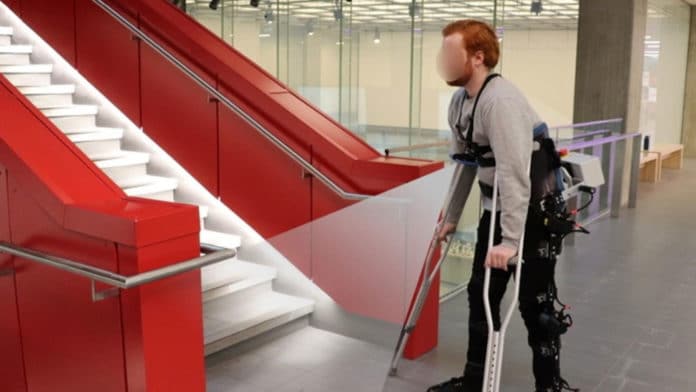Robotics researchers are developing exoskeleton legs capable of thinking and making control decisions on their own using onboard cameras and sophisticated artificial intelligence technology.
As the name suggests, an exoskeleton leg is an external structure that can be used to support people who are otherwise unable to walk. But the things still do have limitations; most existing exoskeleton legs must be manually switched over to different modes – via smartphone applications or joysticks – for more complicated tasks, such as stepping over or around obstacles.
“That can be inconvenient and cognitively demanding,” said Brokoslaw Laschowski, a Ph.D. candidate in systems design engineering who leads a University of Waterloo research project called ExoNet. “Every time you want to perform a new locomotor activity, you have to stop, take out your smartphone, and select the desired mode.”
To address that limitation, the researchers fitted exoskeleton users with wearable video cameras and artificial intelligence-based software to accurately recognize stairs, doors, and other features of the surrounding environment.
The next step of the project will involve sending instructions to motors so that robotic exoskeletons can climb stairs, avoid obstacles or take other appropriate actions based on analysis of the user’s current movement and the upcoming terrain. The team is also working to improve the energy efficiency of motors for robotic exoskeletons by using human motion to self-charge the batteries.
“Our control approach wouldn’t necessarily require human thought,” said Laschowski. “Similar to autonomous cars that drive themselves, we’re designing autonomous exoskeletons that walk for themselves.”
